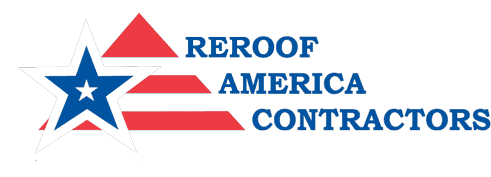Hail Storm & Your Roof: Impacts & Solutions In One Guide
Every time a storm brews, your home, specifically your roof, braces itself for battle. The sky's artillery: hailstones, nature's icy missiles. But the aftermath poses a challenge - identifying the extent of damage and seeking the right storm damage roof repair service. This silent enemy can potentially cause extensive harm, but how exactly does hail inflict such a toll on your roof? Let's discuss the storm's secrets to prepare for the next hail barrage.
Hailstorms: The Unseen Saboteurs Of Roofing Systems
A hailstorm may seem like a fleeting annoyance, but its impact can leave a lasting imprint on your roof. Each hailstone that strikes your roof has the potential to cause damage that can compromise the integrity and longevity of your roofing system.
Gone with the Wind: The Phenomenon of Granule Loss
Granules are tiny, gritty particles that coat the surface of roof shingles. They provide critical protection from the elements and UV radiation. When a hailstone hits a shingle, it can dislodge these granules. While this may seem trivial, repeated hail strikes can lead to significant granule loss, leaving your shingles exposed and vulnerable to further weather-related damage.
Fault Lines: The Issue of Shingle Cracks & Need for Calling Storm Damage Roof Repair Service
The impact of hailstones can cause more than just granule loss. When a hailstone, particularly one of significant size, strikes a shingle, it can cause cracks. These fissures allow water to infiltrate your roof, leading to leaks and potentially severe structural damage if left unchecked. You must call storm damage roof repair service immediately.
The Weakened Guard: Exposed and Fractured Fiberglass Mat
Beneath the granules and asphalt of a shingle lies a fiberglass mat. This mat provides structural integrity to the shingle. A large or fast-moving hailstone can tear the shingle's surface and expose or even fracture this mat. Such damage accelerates shingle deterioration and increases the likelihood of leaks, contributing to roof decay.
The Hidden Damage: Weakened Self-Seal Strip
Most modern shingles feature a self-seal strip – a line of adhesive that bonds shingles together to resist wind uplift. Hailstones can weaken this seal, making your roof more susceptible to losing shingles in high winds. This damage is not always visible but can have serious consequences in subsequent storms.
Damage Detection: Spotting The Signs Of Hail Impact
Detecting hail damage can be challenging, especially if the damage is not severe or widespread. Signs to look for include:
Dents and pockmarks on shingles.
An accumulation of granules in gutters.
Patches of exposed or cracked fiberglass mats.
Indoor signs, like new leaks or water stains on ceilings and walls, can also indicate hail damage.
Size Matters: Understanding The Impact Of Hailstone Sizes
The size of the hailstones in a storm significantly influences the extent of potential roof damage. Here's how different sizes can impact your roof:
Tiny Terrors: 3/4" to 1" Hail Impact
These smaller hailstones can cause granule loss and minor shingle damage, particularly when driven by high winds. This damage may not be immediately noticeable but can accelerate roof wear.
Moderate Miscreants: 1 1/4" to 1 1/2" Hail Impact
Hailstones of this size can cause significant damage, leading to visible granule loss, shingle cracks and early signs of fiberglass mat wear. If your area experiences a storm with hailstones of this size, it's advisable to have your roof inspected by a professional storm damage roof repair service.
Major Malefactors: 1 3/4" to 2" Hail Impact
Hail of these dimensions can severely damage shingles, causing extensive granule loss, large cracks and significant fiberglass mat deterioration. It can also weaken the self-seal strip, making your roof vulnerable to wind damage.
Roof Rivals: 2" Hail Impact
Hailstones this size can wreak havoc on your roof. They can cause catastrophic damage, like shattered shingles, severely fractured fiberglass mats and extensive weakening of the self-seal strip. This level of damage often necessitates comprehensive roof repair or even a full roof replacement.
Visual Inspection: What Does Hail Damage Look Like On Roofs?
Identifying hail damage can be done visually in many cases. Look for 'bruises' or dark spots where you find dislodged granules, cracks or breaks in the shingles. If you notice these signs, it's time to call in a reliable storm damage roof repair service to assess the damage and recommend appropriate repair strategies.
Forging A Weather-Resilient Future With Reroof!
Your roof is a fortress, and every fortress needs a master builder. Brace against the tempest with Reroof America Contractors – your trusted storm damage roof repair service. Why weather the storm when you can rise above it? Secure, enhance and fortify your home now with Reroof America Contractors. Act now for a roof that stands strong tomorrow!

